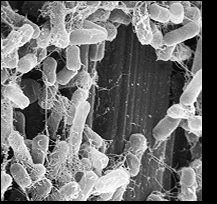
Research
Research
How does nature innovate, creating novel adaptations that help organisms survive and reproduce? Darwin taught us how evolutionary innovations can spread, but his theory is silent about their origins. We are interested in principles of evolutionary innovation that go beyond the well-worn notion that novel adaptations require random DNA mutations. To identify such principles, we study three classes of systems that bring forth most or all evolutionary innovations. These are metabolism, regulatory circuits, and macromolecules like protein and RNA. We analyze and compare how new traits originate in these systems, to identify commonalities between their origins that lead us to the deeper principles we are seeking.
One focus of this research program is the relationship between genotype and phenotype. Between the lower, genetic level of biological organization and the higher level of organisms, a huge gap in our knowledge exists, because for many systems, we do not know how genotypic change translates into phenotypic change. One of our goals is to help fill this gap. To do so, we study a variety of systems, including gene regulatory networks and metabolic networks, which form a bridge between genotype and organism-level phenotypes. How do these networks form their phenotypes? How did they evolve? How do their phenotypes change in different environments and after mutations? How robust are these networks to genetic change? How does their robustness affect the ability to create new phenotypes?
To understand how changing genotypes bring forth new phenotypes, we also perform laboratory evolution experiments on organisms like E. coli and yeast, as well as on macromolecules like proteins and RNA. In these experiment, we study how evolving organisms or molecules adapt to new environments using high-throughput sequencing and genomic tools.
Another research theme revolves around genome architecture, and how it can facilitate or hinder an organism's ability to create new adaptations. For example, most genomes harbor gene duplicates and other kinds of repetitive DNA, such as transposable elements. Do gene duplications merely cause a passive expansion of genome size, are they an engine of innovation, or merely a source of robustness against mutations? Are transposable elements really only parasites inside cells, the ultimate selfish genes, or do they provide benefits to their hosts?
Our work uses comparative analysis of genomic data, experimental evolution, and mathematical modeling. We also develop a variety of bioinformatics tools to help us take advantage of a torrent of data in genomics and structural biology.
The lab is part of the large and active Zurich research communities in evolutionary biology and computational biology.
Our past work has been funded by the National Institutes of Health (USA) and by the Swiss National Science Foundation (SNSF). We are currently funded by the SNSF and by European Research Council (ERC) Advanced Grant No. 739874.
We are members of the Swiss Institute of Bioinformatics.![]()